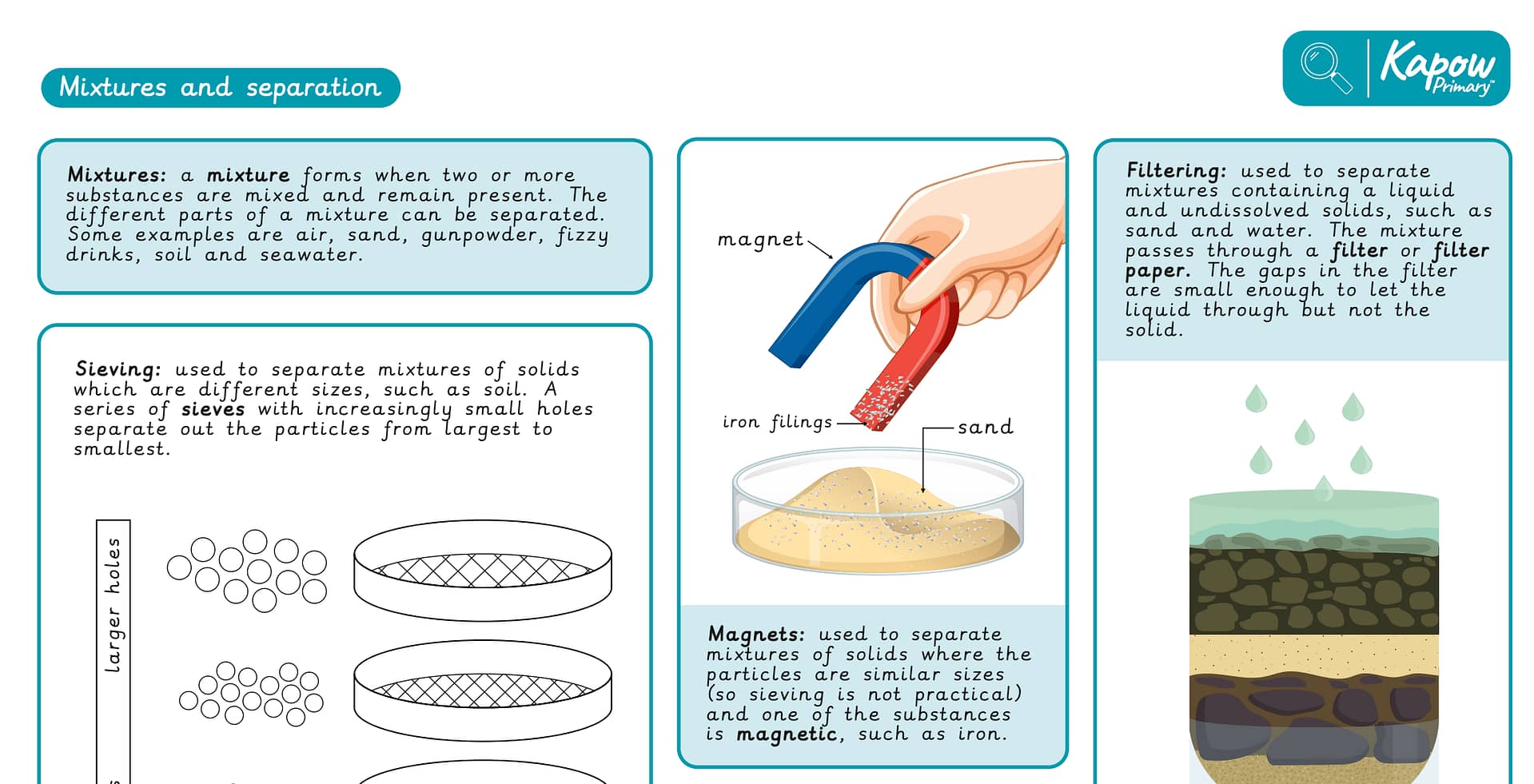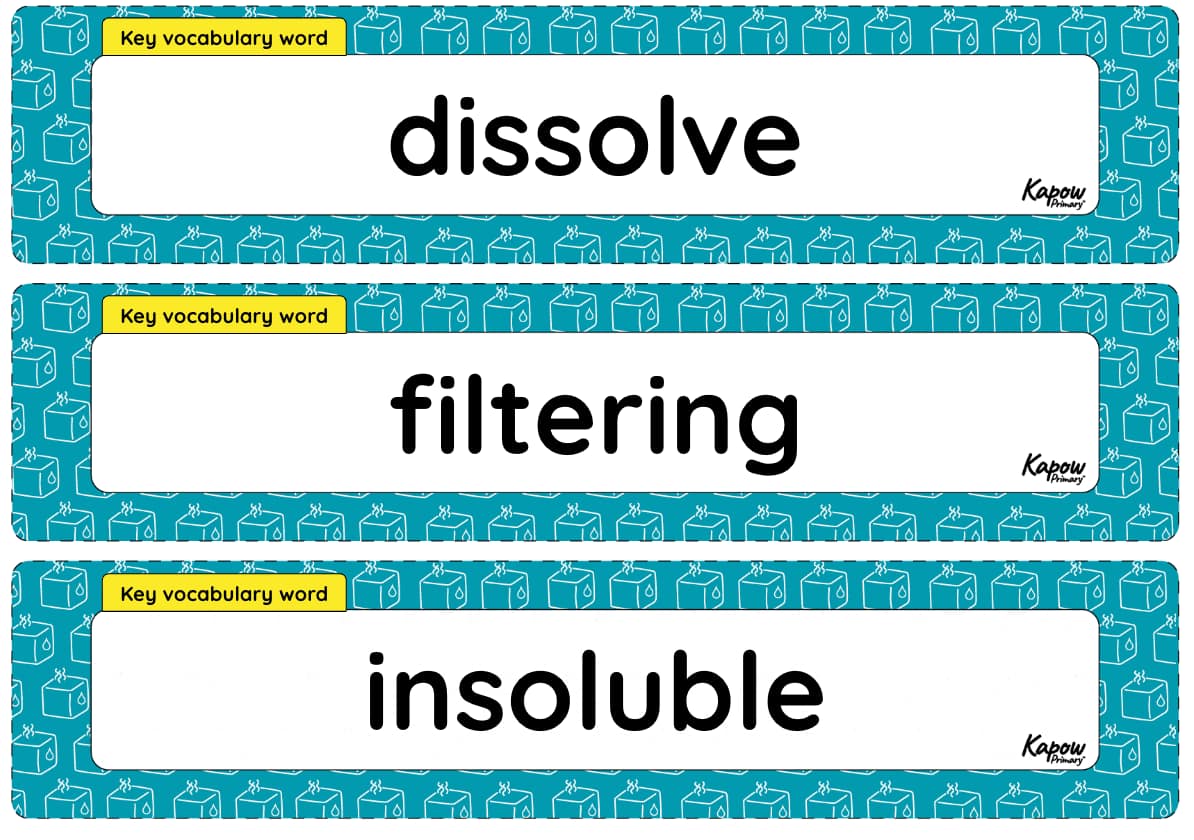Materials: Mixtures and separation
Exploring different types of mixtures and the appropriate methods to separate them.
- Subjects >
- Science >
- Upper key stage 2 >
- Year 5 >
-
Materials: Mixtures and separation
Unit outcomes
Pupils who are secure will be able to:
- Define the term mixture and name some common examples.
- Define the term sieving and explain how sieving separates mixtures.
- Define the term filtering and explain how filtering separates mixtures.
- Define the terms solution and dissolve and name some common examples of solutions.
- Recall some factors that affect the time taken to dissolve.
- Describe the effect of temperature on the time taken to dissolve.
- Define the term evaporating and explain how evaporating separates solutions.
- Identify when sieving, filtering and evaporating should be used.
When working scientifically pupils who are secure will be able to:
- Research a mixture to find out what substances it is made from.
- Draw and annotate a diagram to explain how sieving separates a solid-solid mixture.
- Identify and justify which type of enquiry to use to answer my testable question.
- Identify solutions by observing and describing their appearance.
- Suggest which variables to change, measure and control when investigating how temperature affects the time taken to dissolve.
- Choose which measurements to take and how long to take them for.
Please note that Kapow Primary Science lessons are designed to be 1 hour and 30 minutes long to reflect the requirements of a core subject.
Suggested prior learning
Materials: States of matter
Get startedLessons
Lesson 1: Mixtures
Knowledge
- To describe mixtures.
Working scientifically
- To research using a range of secondary resources.
Lesson 2: Sieving
Knowledge
- To explain the process of sieving.
Working scientifically
- To draw and annotate a diagram to explain a concept.
Lesson 3: Filtering
Knowledge
- To explain the process of filtering.
Working scientifically
- To identify testable questions and how to answer them.
Lesson 4: Solutions
Knowledge
- To describe solutions and how they can be identified.
Working scientifically
- To make observations about solutions.
Lesson 5: Dissolving
Knowledge
- To identify which factors affect the time taken to dissolve.
Working scientifically
- To plan a fair test with consideration of variables and measurements.
Lesson 6: Evaporating
Knowledge
- To describe the process of evaporation.
Key skills
Related content
Unit resources

Knowledge organiser – Science Y5: Materials: Mixtures and separation
Aimed at pupils, two pages providing key facts and definitions from the unit ‘Mixtures and separation’.

Vocabulary display – Science Y5: Materials: Mixtures and separation
A display version of the vocabulary from the unit 'Mixtures and separation'.
Cross-curricular opportunities
British values: mutual respect.

